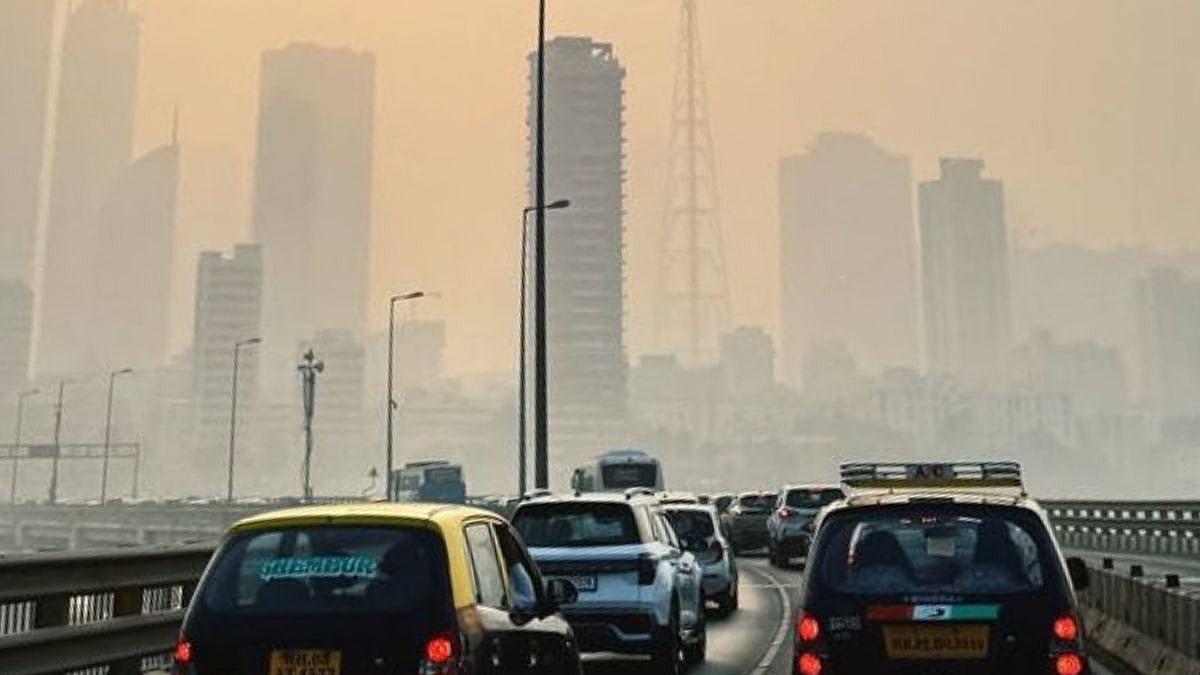Can La Nina 'Fix' Mumbai's Poor AQI? Explained
Mumbai's winter haze prompts residents to seek relief, with meteorologists suggesting La Niña may improve air quality. This climate pattern, characterized by cooler Pacific waters, affects global winds and atmospheric circulation, impacting the city’s pollution levels.

Can La Nina 'Fix' Mumbai's Poor AQI? Explained |
Mumbai: As Mumbai’s skyline disappears behind a smoky haze each winter, residents often wonder whether nature itself can offer some relief. This year, meteorologists say that La Niña, the global climate pattern marked by cooler Pacific Ocean waters, could play a role in improving air quality. Scientists are studying how this weather shift might influence the city’s stubborn air pollution problem, which has worsened despite its coastal winds and frequent sea breezes.
What is La Niña and how does it work?
La Niña is the cold phase of the larger El Niño Southern Oscillation (ENSO) cycle, marked by unusually cool surface waters in the eastern equatorial Pacific Ocean. This cooling alters large-scale atmospheric circulation and wind patterns across the globe.
How can La Niña impact air pollution and AQI?
Air quality in urban areas depends heavily on how pollutants are dispersed or trapped in the atmosphere. During some La Niña phases, stronger winds and more dynamic weather lead to better dispersion of pollutants, reducing levels of fine particulate matter (PM2.5) and other harmful aerosols. For example, a study found fewer “very poor” and “severe” air-quality days in northern India during La Niña winters thanks to higher wind speeds.
However, in other regions La Niña can create stagnant airflow conditions, slower winds, greater humidity near the surface, and thereby worsen the build-up of pollutants by limiting dispersion.
What about Mumbai and its AQI challenges?
Mumbai faces a number of air-quality stressors: traffic emissions, dust from construction, open burning and industrial sources, all contributing to elevated PM2.5 and PM10 levels.
Being coastal, Mumbai usually benefits from sea-breezes which help flush out pollutants. However, recent observations point to La Niña conditions slowing down wind speeds around the city. Meteorologists note this leads to lower dispersion and higher pollutant accumulation.
In fact, during the 2022-23 “triple-dip” La Niña, Mumbai’s particulate matter rose by about 30 % in the winter season, while some northern cities saw improvements. The wind direction shifted, bringing in polluted air from stubble-burning regions and allowing the pollutants to linger over the city, according to a report by HT.
Can La Niña improve Mumbai’s air quality at all?
Yes, it can, but under certain favourable conditions. If La Niña shifts the wind pattern to bring stronger coastal breezes from the sea into the city, that helps flush pollutants and secondly, if rainfall associated with La Niña washes out particulates, reducing concentration, although this is less marked in Mumbai’s case.
But realistically, because Mumbai has high local emissions and complex geographic features (dense built-up zones, nearby industries and open burning), the effect of La Niña alone is insufficient. It may provide temporary relief or favourable weather windows, but without tackling local emission sources the city remains vulnerable.
La Niña is not a 'magic fix' for Mumbai’s air quality, but it can tilt the meteorological balance in its favour, especially if the winds pick up and untimely rainfall helps. Yet in many past instances, La Niña has actually slowed the airflow, worsened pollutant trapping and increased AQI levels for coastal cities like Mumbai.
Today's AQI in Mumbai
As of Monday, November 10, the weather is overcast with a temperature of $28^\circ C$, 51% humidity, and a light wind speed of 6 km/h. The UV Index is high at 7. Of more pressing concern is the air quality, which is classified as "Poor" with an AQI-US of 141. Primary pollutants PM10 and PM2.5 are at \(74\mu g/m^3\) (moderate) and \(52\mu g/m^3\) (unhealthy). PM2.5 poses serious health risks, affecting respiratory and cardiovascular systems, especially for sensitive individuals and the general public.
This air quality level indicates that people may begin to experience adverse health effects, and individuals belonging to sensitive groups could be more severely impacted.
To get details on exclusive and budget-friendly property deals in Mumbai & surrounding regions, do visit: https://budgetproperties.in/
RECENT STORIES
-
-
-
-
-